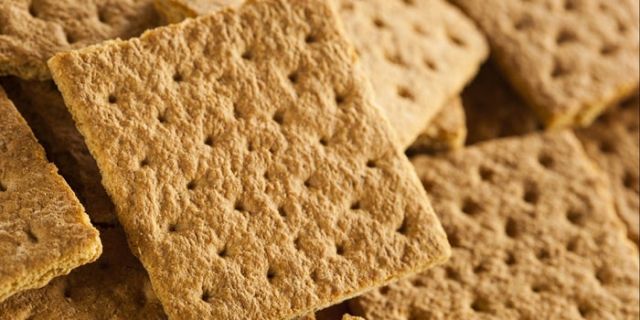Did You Know Graham Crackers Were Invented to Combat the Evils of Coffee, Alcohol, and Masturbation? (Video)
by N.Morgan

Many decades before graham crackers were used to make s’ mores or the tasty crust of a Key lime pie, graham crackers served a more puritanical purpose in 19th-century America. The cookies were invented by Sylvester Graham, an American Presbyterian minister whose views on food, sex, alcohol, and nutrition would seem a bit extreme to today’s cracker-snackers. Much like the mayor in the movie Chocolat, Graham and his thousands of followers—dubbed Grahamites—believed it was sinful to eat decadent foods. To combat this moral decay, Graham started a diet regimen of his own.
Graham ran health retreats in the 1830s that promoted a bland diet that banned sugar and meat. According to Refinery29, Graham’s views ultimately inspired veganism in America as well as the “first anti-sugar crusade.” He condemned alcohol, tobacco, spices, seasoning, butter, and “tortured” refined flour. Caffeine was also a no-no. In fact, Graham believed that coffee and tea were just as bad as tobacco, opium, or alcohol because they created a “demand for stimulation.” However, the worst vice, in Graham’s opinion, was overeating. “A drunkard sometimes reaches old age; a glutton never,” he once wrote.
Graham’s austere philosophy was informed by the underlying belief that eating habits affect people’s behaviors and vice versa. He thought certain foods were “overstimulating” and led to impure thoughts and passions, including masturbation—or “self-pollution,” as he called it—which he believed to be an epidemic that caused both blindness and insanity.

LIBRARY OF CONGRESS, PUBLIC DOMAIN, WIKIMEDIA COMMONS
Graham’s views directly influenced Victorian-era cornflake inventor John Harvey Kellogg, who was born a year after Graham died. Like his predecessor, Kellogg also believed that meat and some flavorful foods led to sexual impulses, so he advocated for the consumption of plain foods, like cereals and nuts, instead. (Unsurprisingly, the original recipes for both corn flakes and graham crackers were free of sinful sugar.)
In one lecture, Graham told young men they could stop their minds from wandering to forbidden places if they avoided “undue excitement of the brain and stomach and intestines.” This meant swearing off improper foods and substances like tobacco, caffeine, pepper, ginger, mustard, horseradish, and peppermint. Even milk was banned because it was “too exciting and too oppressive.”
So what could Graham’s followers eat? The core component of Graham’s diet was bread made of coarsely ground wheat or rye, unlike the refined white flour loaves that were sold in bakeries at that time. From this same flour emerged Graham’s crackers and muffins, both of which were common breakfast foods. John Harvey Kellogg was known to have eaten the crackers and apples for breakfast, and one of his first attempts at making cereal involved soaking twice-baked cracker bits in milk overnight.

However, Kellogg was one of the few remaining fans of Graham’s diet, which began to fall out of favor in the 1840s. At Ohio’s Oberlin College, a Grahamite was hired in 1840 to strictly enforce the school’s meal plans. One professor was fired for bringing a pepper shaker to the dining hall, and the hunger-stricken students organized a protest the following year, arguing that the Graham diet was “inadequate to the demands of the human system as at present developed.” Ultimately, the Grahamite and his tyrannical nutrition plan were kicked out.
Much like Kellogg’s corn flakes, someone else stepped in and corrupted Graham’s crackers, molding them into the edible form we now know—and, yes, love—today. In Graham’s case, it was the National Biscuit Company, which eventually became Nabisco; the company started manufacturing graham crackers in the 1880s. But Graham would likely be rolling in his grave if he knew they contained sugar and white flour—and that they’re often topped with marshmallows and chocolate for a truly decadent treat.
Give The Gift Of Health And Support BeforeItsNews By Trying All Our Health Products Below.
We have an affiliate program designed for content creators and affiliate marketers, who would like to sell this product, please click here for affiliate program details. Our affiliate program is designed to help you monetize your screen time.

References:
.png)

Comments
Post a Comment